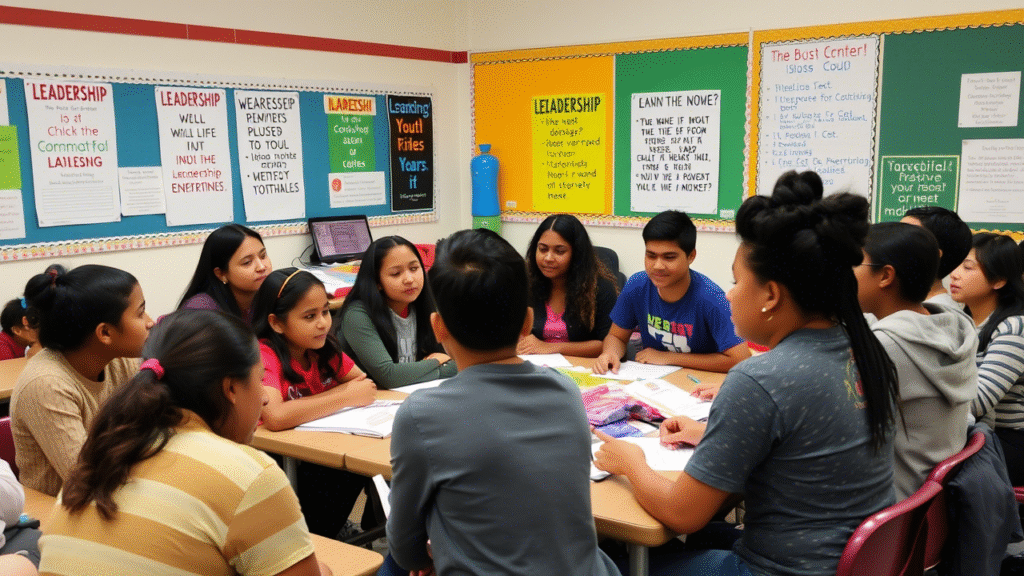Leadership isn’t just a corporate buzzword—it’s a life skill that begins forming in childhood. Schools have the unique opportunity to shape young minds into thoughtful, confident, and responsible leaders. A well-structured youth leadership curriculum for schools can instill these traits early, setting students on a path toward personal, academic, and professional success.
In this article, we’ll explore why leadership education matters, what makes a great curriculum, key components to include, and some of the top resources and programs available to schools today.
Why Leadership Training Belongs in Schools
In a world that’s rapidly evolving—socially, technologically, and economically—young people need more than academic excellence to thrive. Leadership skills empower students to:
- Make responsible decisions
- Communicate effectively
- Work well in teams
- Handle challenges with resilience
- Take initiative in both school and community settings
By integrating leadership development into the classroom, schools can foster well-rounded students who are not just prepared for exams but prepared for life.
Core Benefits of a Youth Leadership Curriculum
A strong youth leadership curriculum goes beyond teaching students how to “take charge.” It nurtures the whole individual by developing:
1. Confidence & Self-Awareness
Students learn to understand their strengths and weaknesses, speak up, and advocate for themselves and others.
2. Problem Solving & Critical Thinking
Good leaders think ahead, assess situations, and make thoughtful decisions.
3. Communication & Empathy
From public speaking to conflict resolution, leadership training teaches young people how to communicate with clarity and compassion.
4. Teamwork & Collaboration
A strong curriculum encourages peer leadership, teamwork, and cooperative projects.
5. Responsibility & Initiative
Leadership courses instill a sense of ownership and responsibility in school, at home, and in the community.
What Should Be in a Youth Leadership Curriculum?
If you’re building or choosing a youth leadership curriculum for schools, consider including the following key elements:
✅ Goal Setting & Vision Planning
Teach students how to set SMART goals (Specific, Measurable, Achievable, Relevant, Time-bound) and plan their path to success.
✅ Communication Workshops
Activities on active listening, public speaking, and digital communication etiquette.
✅ Conflict Resolution Techniques
Train students to handle disagreements respectfully and find win-win solutions.
✅ Community Engagement Projects
Encourage leadership through service. Let students lead initiatives that address real issues in their community.
✅ Role-Playing & Simulation
Mock situations (like student government or ethical dilemmas) that allow practical leadership experience.
✅ Reflection & Journaling
Regular self-reflection helps students internalize lessons and track their growth.
✅ Peer Mentorship Opportunities
Older students mentoring younger peers strengthens leadership across age groups.
How to Implement Youth Leadership Curriculum in Schools
1. Embed It Across Subjects
Leadership doesn’t have to be isolated. English classes can focus on persuasive speaking, while science can promote leadership through collaborative lab work.
2. After-School Programs & Clubs
Leadership clubs, debate teams, and service groups are great avenues for applied learning.
3. Dedicated Leadership Courses
Offer elective courses or short-term modules focused solely on leadership principles.
4. Partner with Local Organizations
Nonprofits and community leaders can provide mentorship, workshops, or field trips.
5. Create Student Leadership Positions
Beyond student council, assign roles in classroom tasks, school events, and committees.
Best Youth Leadership Curriculum Resources for Schools
Here are some standout programs and platforms providing ready-to-use or customizable leadership curriculum for schools:
🏫 The Leader in Me (FranklinCovey)
Based on Stephen Covey’s 7 Habits of Highly Effective People, this K-12 program promotes leadership, responsibility, and self-discipline.
- Age range: Elementary to High School
- Format: Whole-school model
- Key focus: Personal leadership and culture change
🧠 Youth Leadership Initiative (YLI)
Developed by the University of Virginia, YLI offers free civics-based leadership and character education resources.
- Age range: Middle & High School
- Format: Online and printable modules
- Key focus: Civic responsibility and government leadership
📘 CharacterStrong
An evidence-based program focusing on leadership, character development, and SEL (Social Emotional Learning).
- Age range: K-12
- Format: Digital curriculum with educator training
- Key focus: Empathy-driven leadership and inclusion
🎤 Toastmasters Youth Leadership Program
An 8-session workshop series that teaches students communication and public speaking skills.
- Age range: Middle & High School
- Format: Club-style sessions (can be facilitated by volunteers)
- Key focus: Verbal communication and confidence
🌍 Global Youth Leadership Institute (GYLI)
Designed for high school students, GYLI blends experiential learning with global perspectives and leadership reflection.
- Age range: High School
- Format: Retreats, workshops, and curriculum
- Key focus: Global leadership and multicultural understanding
Tips for Engaging Students in Leadership Learning
- Make It Relatable: Use real-life scenarios and case studies that resonate with students’ lives.
- Let Students Lead: Give them ownership of class projects or event planning.
- Celebrate Leadership Wins: Recognize leadership efforts with awards, assemblies, or school shoutouts.
- Be a Role Model: Teachers and administrators should model the leadership values they teach.
- Include Student Voice in Curriculum Development: Ask students what leadership means to them and co-create content.
Addressing Challenges
Implementing a youth leadership curriculum comes with a few challenges:
- Limited Time: Schools are often already stretched thin. Tip: integrate leadership into existing subjects.
- Lack of Trained Staff: Consider professional development or partnering with organizations.
- Measuring Impact: Use pre/post surveys, reflection journals, and leadership portfolios to track student growth.
Final Thoughts
A thoughtfully designed youth leadership curriculum for schools equips students with far more than academic knowledge—it gives them the courage, tools, and vision to lead their lives and communities with purpose.
Whether implemented through full courses, extracurriculars, or cross-curricular projects, leadership education belongs at the heart of 21st-century learning. The leaders of tomorrow are sitting in your classroom today. Let’s help them rise.


